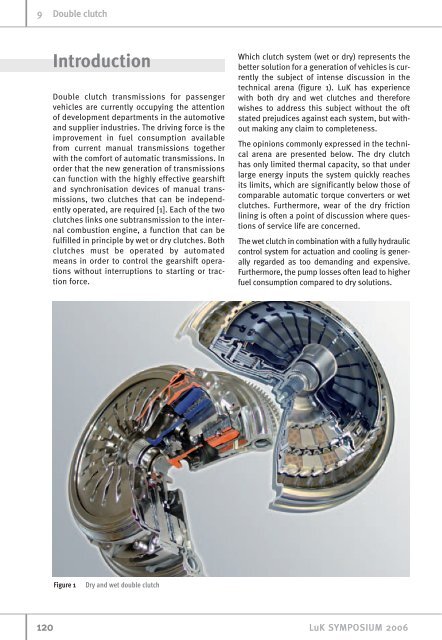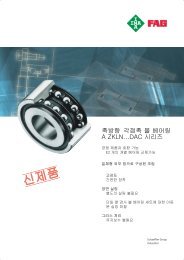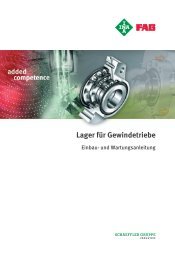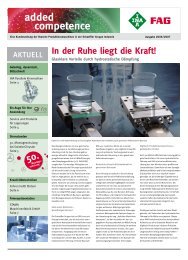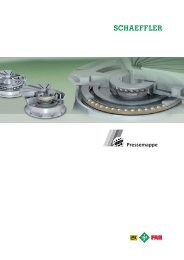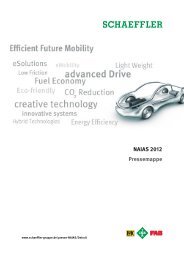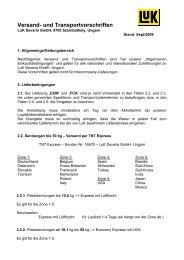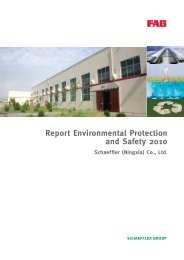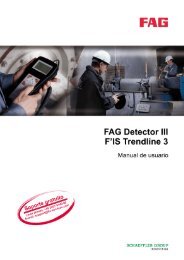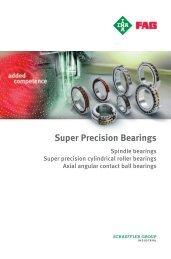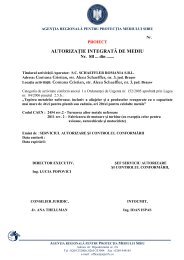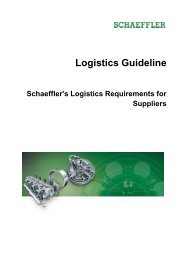Double clutch
Double clutch
Double clutch
You also want an ePaper? Increase the reach of your titles
YUMPU automatically turns print PDFs into web optimized ePapers that Google loves.
9 <strong>Double</strong> <strong>clutch</strong><br />
Introduction<br />
<strong>Double</strong> <strong>clutch</strong> transmissions for passenger<br />
vehicles are currently occupying the attention<br />
of development departments in the automotive<br />
and supplier industries. The driving force is the<br />
improvement in fuel consumption available<br />
from current manual transmissions together<br />
with the comfort of automatic transmissions. In<br />
order that the new generation of transmissions<br />
can function with the highly effective gearshift<br />
and synchronisation devices of manual transmissions,<br />
two <strong>clutch</strong>es that can be independently<br />
operated, are required [1]. Each of the two<br />
<strong>clutch</strong>es links one subtransmission to the internal<br />
combustion engine, a function that can be<br />
fulfilled in principle by wet or dry <strong>clutch</strong>es. Both<br />
<strong>clutch</strong>es must be operated by automated<br />
means in order to control the gearshift operations<br />
without interruptions to starting or traction<br />
force.<br />
Figure 1 Dry and wet double <strong>clutch</strong><br />
Which <strong>clutch</strong> system (wet or dry) represents the<br />
better solution for a generation of vehicles is currently<br />
the subject of intense discussion in the<br />
technical arena (figure 1). LuK has experience<br />
with both dry and wet <strong>clutch</strong>es and therefore<br />
wishes to address this subject without the oft<br />
stated prejudices against each system, but without<br />
making any claim to completeness.<br />
The opinions commonly expressed in the technical<br />
arena are presented below. The dry <strong>clutch</strong><br />
has only limited thermal capacity, so that under<br />
large energy inputs the system quickly reaches<br />
its limits, which are significantly below those of<br />
comparable automatic torque converters or wet<br />
<strong>clutch</strong>es. Furthermore, wear of the dry friction<br />
lining is often a point of discussion where questions<br />
of service life are concerned.<br />
The wet <strong>clutch</strong> in combination with a fully hydraulic<br />
control system for actuation and cooling is generally<br />
regarded as too demanding and expensive.<br />
Furthermore, the pump losses often lead to higher<br />
fuel consumption compared to dry solutions.<br />
120 LuK SYMPOSIUM 2006


